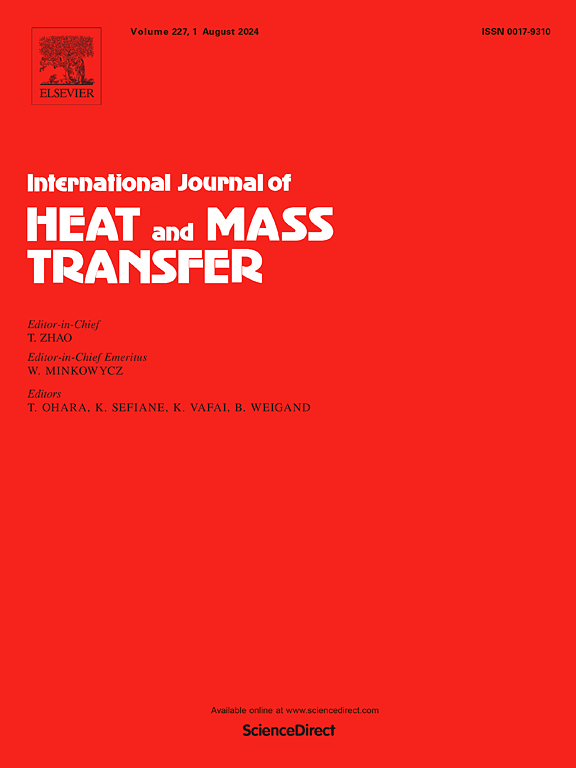A next-generation device for spreading volatiles substances into room air: Study of parameters affecting efficient dispersion
IF 5
2区 工程技术
Q1 ENGINEERING, MECHANICAL
International Journal of Heat and Mass Transfer
Pub Date : 2025-01-17
DOI:10.1016/j.ijheatmasstransfer.2025.126709
引用次数: 0
Abstract
This study focuses on enhancing the efficacy of wick-based air fresheners by improving the evaporation rate and dispersion of volatile fragrances. It addresses the issue of reduced evaporation, primarily caused by the accumulation of non-volatile substances in the wicks of existing air fresheners. To tackle this problem, a prototype device was devised, featuring three wicks connected to a motor and shaft system capable of periodic immersion in a fragrant liquid, accompanied by a fan mounted on the reservoir's side to enhance airflow over the liquid. The test liquid used was a mixture of Decane (most volatile component), Dodecane, and Hexadecane. The study encompassed five test cases: reservoir on its own, reservoir with stationary wicks, wicks rotating without fan, stationary wicks with fan, and rotating wicks with fan. This research involved two phases: initially monitoring the gradual decrease in liquid mass over time using an in-house low-cost device capturing balance images. The results demonstrated a consistent increase in mass loss from 0.034 ± 0.011 gm/hr in Case 1 to 1.182 ± 0.256 gm/hr in Case 5, representing a 34-fold increase. The residual liquids in the tank from each case were preserved in vials for the subsequent Gas Chromatography analysis, which revealed a declining percentage of Decane (the most volatile component) from 46.84 % in Case 1 to 1.85 % in Case 5, a reduction by approximately 25 times. The study's findings revealed that the combination of rotating wicks and fan yielded the highest mass loss and the lowest remaining concentration of the volatile Decane fragrance component, confirming its effectiveness in optimizing fragrance evaporation. Consequently, the reservoir with a rotating wick coupled with a fan emerged as the most promising choice for the prototype design, based on its superior performance in terms of mass loss and volatile component dissipation. In summary, this research underscores the significance of factors like surface area, airflow velocity, and the relative concentration of volatile components in enhancing air freshener performance. Through improved fluid flow and evaporation, the developed prototype offers a potential solution to address the challenge of reduced evaporation in air fresheners. This study represents an advancement in air freshener technology and lays the foundation for the development of more efficient fragrance dispersal devices.
求助全文
约1分钟内获得全文
求助全文
来源期刊
CiteScore
10.30
自引率
13.50%
发文量
1319
审稿时长
41 days
期刊介绍:
International Journal of Heat and Mass Transfer is the vehicle for the exchange of basic ideas in heat and mass transfer between research workers and engineers throughout the world. It focuses on both analytical and experimental research, with an emphasis on contributions which increase the basic understanding of transfer processes and their application to engineering problems.
Topics include:
-New methods of measuring and/or correlating transport-property data
-Energy engineering
-Environmental applications of heat and/or mass transfer

 求助内容:
求助内容: 应助结果提醒方式:
应助结果提醒方式:


